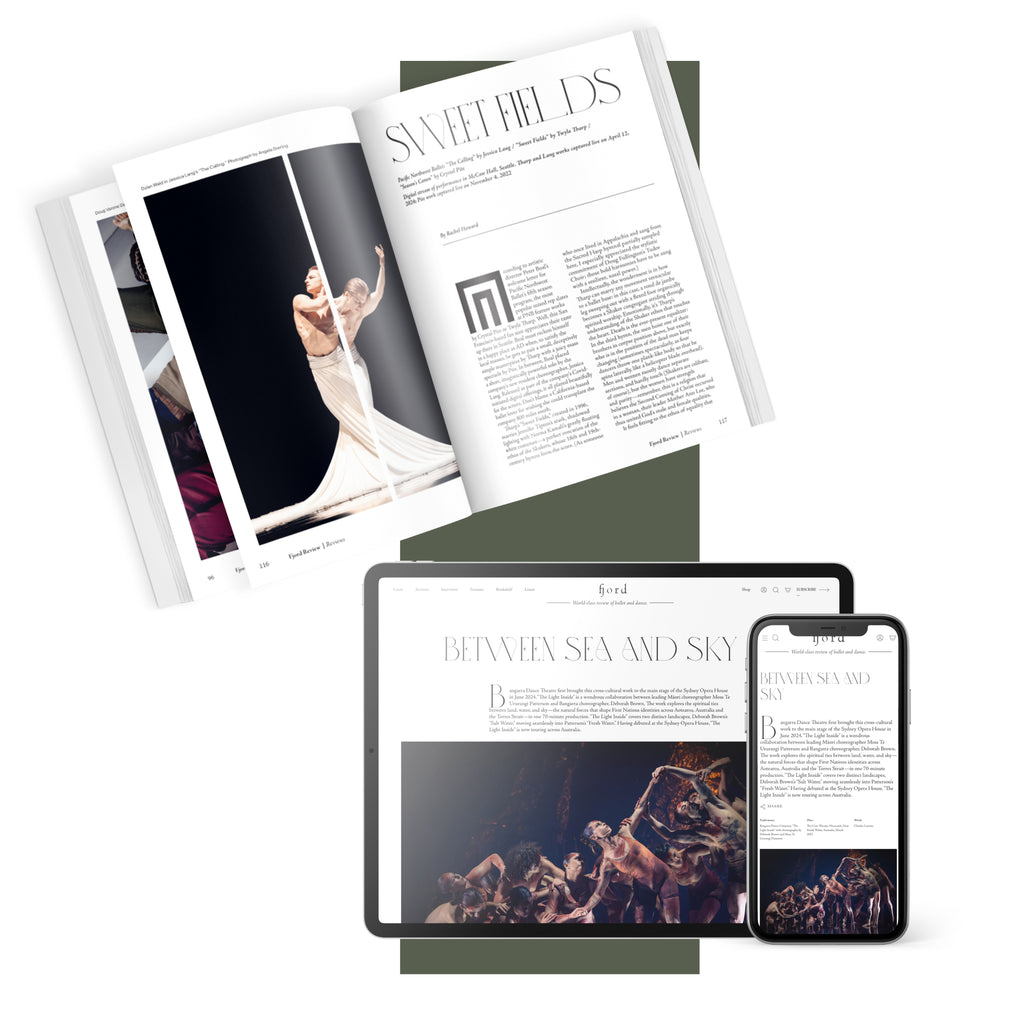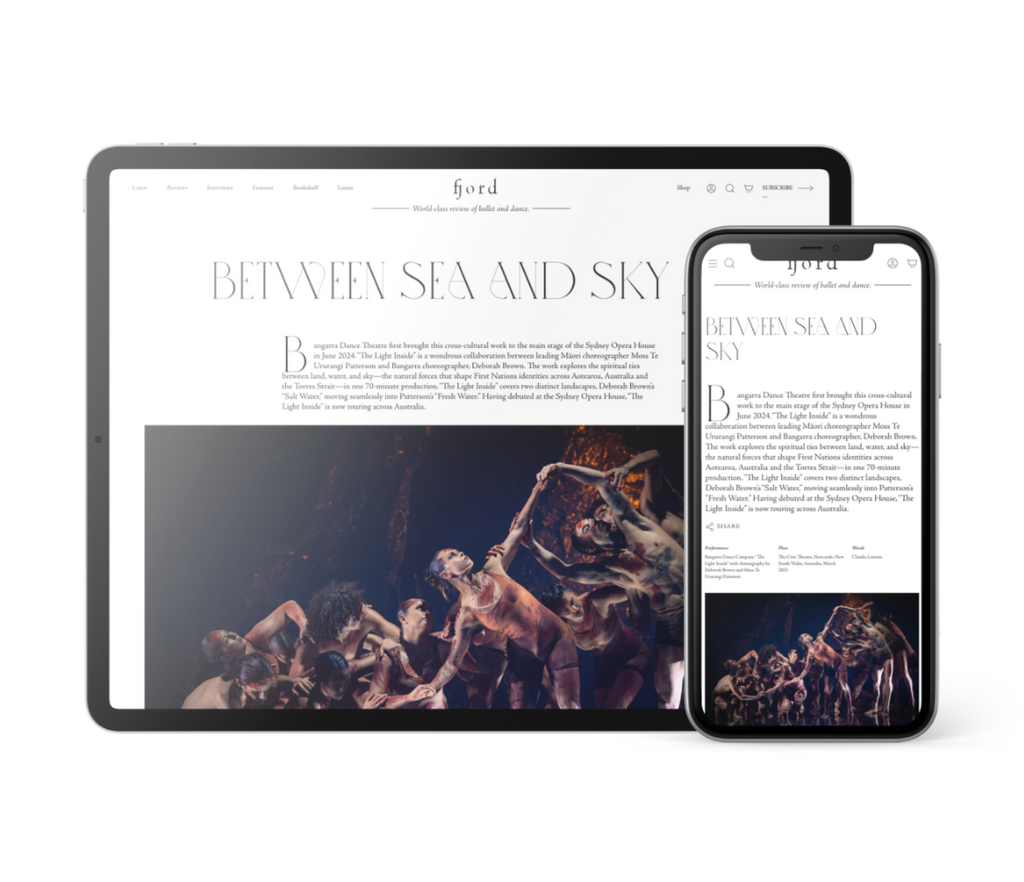As the red sparkles dissolve, the quality of the dancers’ movements changes. The movement becomes combative. With a series of quickening punches and blocking moves, Okwui is pushed out of the center as the second dancer continues vigorously thrashing at the air. Okwui crawls to her beaded headdress, places it on her head, and takes her place on a low stool. Now the second dancer claims the circle with a series of loose hipped dance steps. Her arms and torso quickly assume the quality of the steps. Then, as if possessed by an external force, her entire being takes off into speedy, staccato movements that evolve into a rapid-fire, full body vibration.
Like midwives coaching a birth, the Beaded Ones begin their swaying with audible breathing and panting, the headdress beads clicking. They rise and one circles the inner sanctum as the others settle into the ground—either seated or lying down in repose—like ancient banyan tree roots merging with the earth. The third dancer, who is circling, repeats the actions of entering the ritual space: taking a lantern under her headdress, walking to a place of entrance, putting down the light. She crouches to the ground and shakes off her headdress. Okwui, who is seated on a stool as a Beaded One, begins a soothing chant, which is joined in time by the others.
The third dancer enters and matches the now quieted quality of the second dancer. Their bodies rub against each other and then separate to form complimentary shapes around each other. Exploring an isolated twisting motion, one body leans upon the support of the other. They continue this while changing positions of contact and exchanging roles of reliance and support. Again, the splash of red lights illuminates this field of heightened interconnection. In an instant the dynamic changes and the bodies begin to thrust themselves against each other and away from each other, arms flailing. As the lights disappear, the aggressive energy peters out, and the third dancer supports and cradles the second dancer, who is now utterly spent, until she falls out of the dance ground in a puddle of exhaustion.
The third dancer commences her dance to a wash of pulsing chords. On cue, the Beaded Ones sway. One paces the perimeter of the circle as the central dancer rotates her body with the inside of her wrists locked together above her head. She continues revolving as her joined wrists shift behind her head. Imperceptibly, the physical movements begin to suggest something nefarious. Twisting and resisting against her seemingly bound wrists, standing on a single spot under the projections of moving water directly above, the dancer, to my mind, looks to be recalling the trauma of a slave struggling against her bonds in the hold of a ship.
After another period of swaying and rocking, the fourth dancer removes her headpiece to enter the central space. She immediately surrounds the central dancer with her arms, her head, and her gaze as if to hold her. They begin undulating together like seaweed, intertwining their arms and hands, then rotating toward and away from each other. Coaxed on by the sound and motion of the swaying chorus, the two dancers rise and descend, their bodies leaning against each other. Then, vibrating together, the two remain connected, but without the touch of hands or arms. The full complex of electronic sound diminishes to a simple heartbeat and the constellation of red lights appears. In this portal of co-emergence, time seems to slow down to a time beyond time—measured only by human hearts beating in elemental connection.
The third dancer crawls out of the circle and leaves the fourth dancer twitching on her hands and knees. Stretching upward and then back down, she pokes at the air with one arm in jagged motions like a birdling prodding its way out of its shell. And so, it continues for three hours—audience members have been instructed to leave and enter as they please. The work, which Okpokwasili and Born have dubbed a “durational practice” is, in my opinion, a contemporary ritual—a powerful embodied practice of connection, recollection, grieving, healing, and transformation—transformative for the viewer as well as the doer. Dance, used in this way, has been all but lost in our modern world of capital and concepts. Perhaps with the ancestral wisdom of “looking back to see forward” and Sweat Variant’s fearless experimentation, we can find our way back and retrieve it.











comments